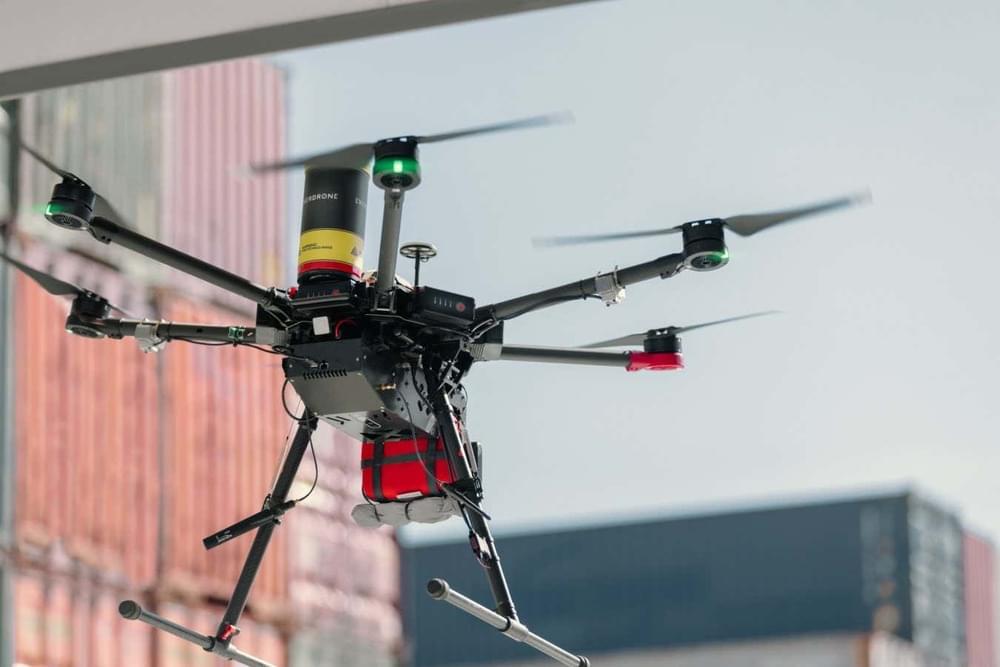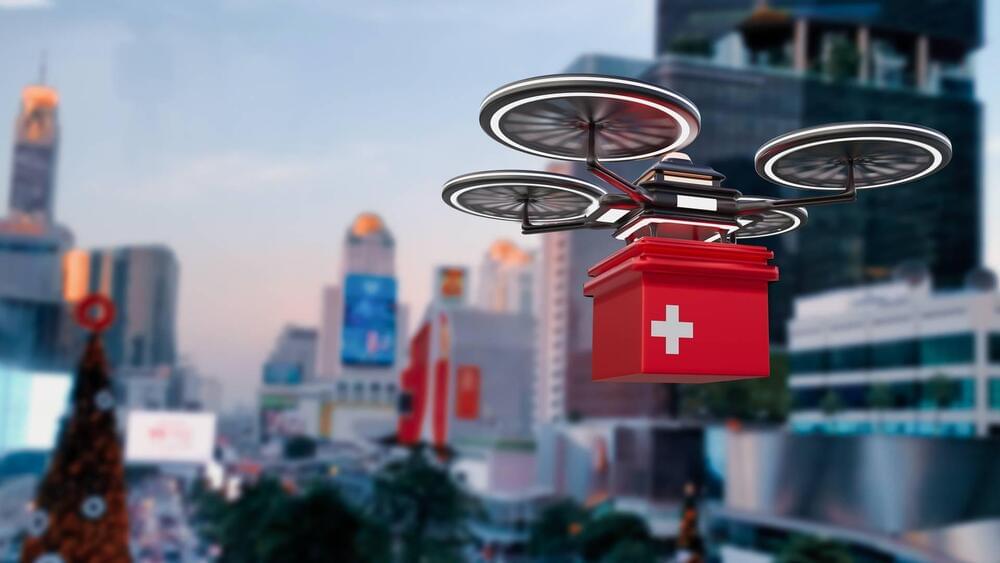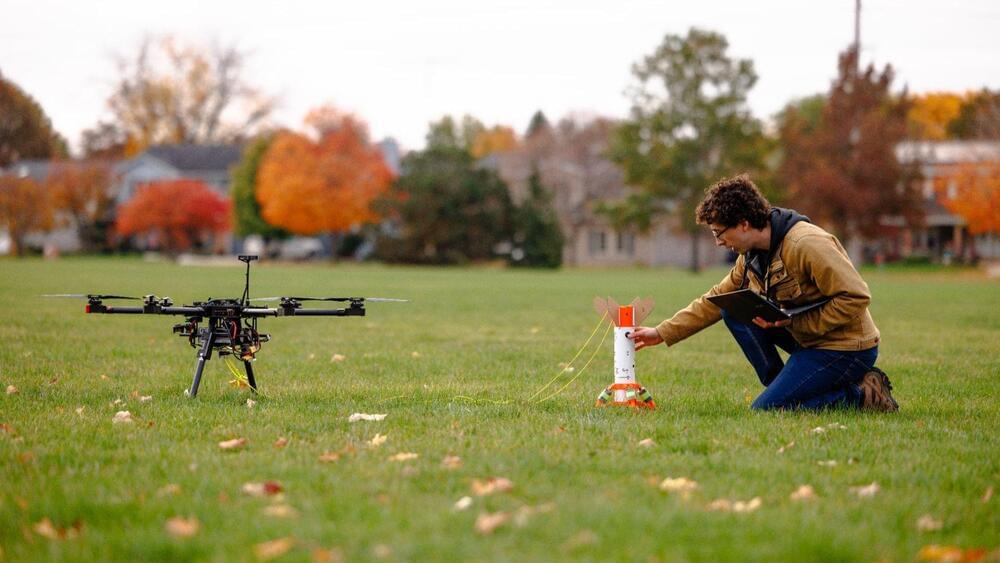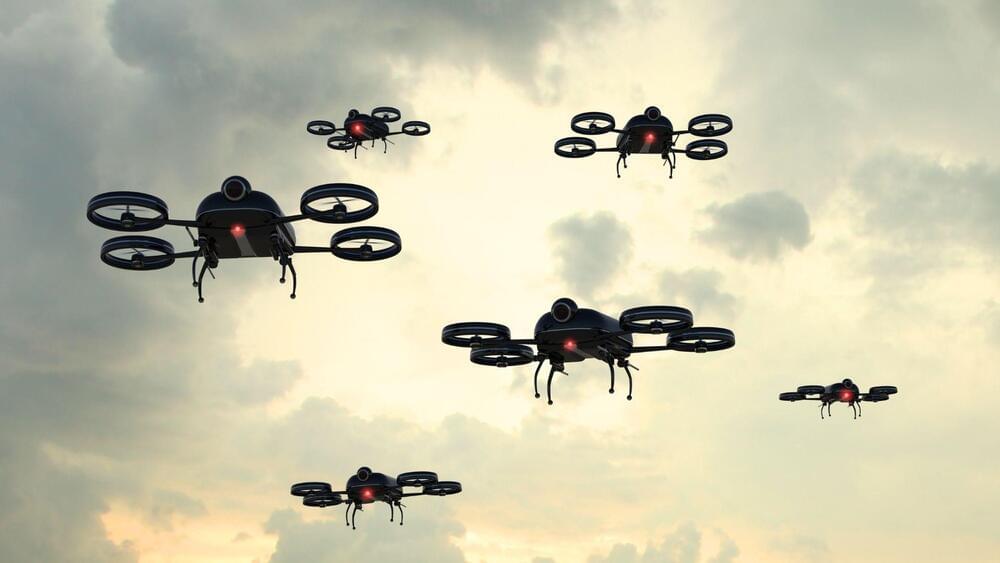People who have gone into cardiac arrest can get treatment faster if a drone delivers a defibrillator, but there needs to be someone nearby trained in CPR, shows a trial in Sweden.
By David Cox

People who have gone into cardiac arrest can get treatment faster if a drone delivers a defibrillator, but there needs to be someone nearby trained in CPR, shows a trial in Sweden.
By David Cox
More information about TITA robot:
🔗 Official Website: https://shop.directdrive.com/products/tita?utm_source=prorobots.
🔗 YouTube: www.youtube.com/@directdrivetech4558
Meet the fast-legged TITA robot, which made its first appearance at the ICRA 2023 Robotics Show. Easily switching between wheeled and walking modes, the robot with eight degrees of freedom is able to move quickly on any terrain. In addition, the developers report that TITA combines exceptional perceptual abilities with advanced decision-making capabilities. Its maneuverability, sleek design, modular construction and ability to quickly swap payloads and accessories make it a true Swiss knife in the world of security and service robots. TITA also has exceptional fall resistance, improved self-healing capabilities, instant response time and enhanced obstacle avoidance ability. The robot easily adapts to difficult terrain and, importantly, supports secondary development in multiple modes. The latter not only allows you to control it at any level using RPC, but also allows you to program the robot for your tasks. If TITA has captured your heart as well as ours, you can learn more about the robot and even buy it for yourself by using the QR code on the screen.
👉For business inquiries: [email protected].
✅ Instagram: https://www.instagram.com/pro_robots.
DARPA launches a new project to develop incredible military technology for underwater warfare, the US, UK and Australia test autonomous groups of military robots, ChatGPT independently developed a robot, and NASA plans a $10-quintillion mission! See these and other high-tech news in one video!
00:00 In this video.
00:30 Tita robot.
1:40 Combat robot drills.
2:46 New DARPA project.
4:12 ChatGPT creates robots.
5:43 Tesla ready to share technology.
6:41 A single-seat multicopter goes on sale.
7:46 High tech collision.
8:42 NASA begins exploring Psyche.
9:58 New robot guide.
10:35 An ingenious AI gadget.
11:48 Boston Dynamics upgrades robot Spot.
12:45 Robot chef learns to cook from video.
13:40 Drone to search for objects in murky waters.
14:44 New agricultural robot.
15:21 Delivery robots take over the world.
#prorobots #robots #robot #Neurotechnology #robotics #Neurochips #Neuralink.

Ocean Eye will illuminate the hidden realms of marine biodiversity and pave the way for unprecedented insights into the ocean using lidar technology and advanced sensors.
In a groundbreaking initiative, researchers from the Technical University of Denmark (DTU) and Aarhus University spearhead the Ocean Eye project. This revolutionary undertaking aims to transform our understanding of marine biodiversity using cutting-edge optical technologies, according to a university press release.
The project utilizes a combination of hyperspectral cameras, lasers, and artificial intelligence on an autonomous vessel to gather comprehensive data on coastal waters, surpassing the limitations of traditional methods.
Challenging the uncharted depths
Despite 71 percent of Earth’s surface being covered by water, a staggering 91 percent of marine species remain unidentified, creating a substantial blind spot in our knowledge of marine biodiversity. Traditional methods employing divers and drones have proven challenging and expensive, leading DTU to pioneer the Ocean Eye project.

They are faster than ambulances in situations where timing is key.
Karolinska Institutet researchers have been investigating the idea of sending drones equipped with automated external defibrillators (AEDs) to patients in cardiac arrest instead of ambulances and have now found that, in more than half of the cases, the drones were three minutes ahead of the vehicles. In addition, in the majority of cases where the patient was in cardiac arrest, the drone-delivered defibrillator was employed to stop the condition from getting worse or leading to death.
The most simple factor
“The use of an AED is the single most important factor in saving lives. We have been deploying drones equipped with AED since the summer of 2020 and show in this follow-up study that drones can arrive at the scene before an ambulance by several minutes. This lead time has meant that the AED could be used by people at the scene in several cases,” said Andreas Claesson, Associate Professor at the Center for Cardiac Arrest Research at the Department of Clinical Research and Education, Södersjukhuset, Karolinska Institutet, and principal investigator of the study.
Uncrewed submarines loaded with ‘multi-domain’ drones could offer a new dimension for hunting for enemy naval forces and mines, and more.
In a year of smashed global temperature records, the United Arab Emirates (UAE) is turning to technology to turn the tide on the searing heat. As a report by Business Insider points out, in the city of Dubai, which reaches heats of up to 120 degrees F (48 degrees C), scientists are using a special method to make it rain.
Specifically, Dubai is using drones that fly into clouds where they then discharge electricity to kickstart rain, which reduces temperatures and provides much-needed water resources.


From vehicle collision avoidance to airline scheduling systems to power supply grids, many of the services we rely on are managed by computers. As these autonomous systems grow in complexity and ubiquity, so too could the ways in which they fail.
Now, MIT engineers have developed an approach that can be paired with any autonomous system, to quickly identify a range of potential failures in that system before they are deployed in the real world. What’s more, the approach can find fixes to the failures, and suggest repairs to avoid system breakdowns.
The team has shown that the approach can root out failures in a variety of simulated autonomous systems, including a small and large power grid network, an aircraft collision avoidance system, a team of rescue drones, and a robotic manipulator. In each of the systems, the new approach, in the form of an automated sampling algorithm, quickly identifies a range of likely failures as well as repairs to avoid those failures.

LIVERMORE, Calif. — Blueshift Optics, owned by former Sandia employee Joey Carlson, is working to shift the way radioactive materials are detected, using technology that he helped create at Sandia National Laboratories.
Radiation detection has long been a critical aspect of national security and efforts to make the world safer.
“Agencies are trying to cast this wide net to catch nuclear smuggling, and this is one aspect of that effort,” said Sandia materials scientist Patrick Feng. “You could use this technology at a border crossing, in a handheld detector as someone enters a facility or fly it on a drone to map an area.”

The drones utilized large language models to engage with each other and their operator.
Marking a significant leap concerning drone technology, researchers in China have enabled unmanned aerial vehicles (UAVs) to engage in “group chats” to discuss and assign work to one another, much like human teams.
The research work accessed by South China Morning Post (SCMP) was done by a team led by Li Xuelong at the School of Artificial Intelligence, Optics and Electronics at Northwestern Polytechnical University in China. According to them, the technology might improve security patrols, disaster relief, and aerial logistics.